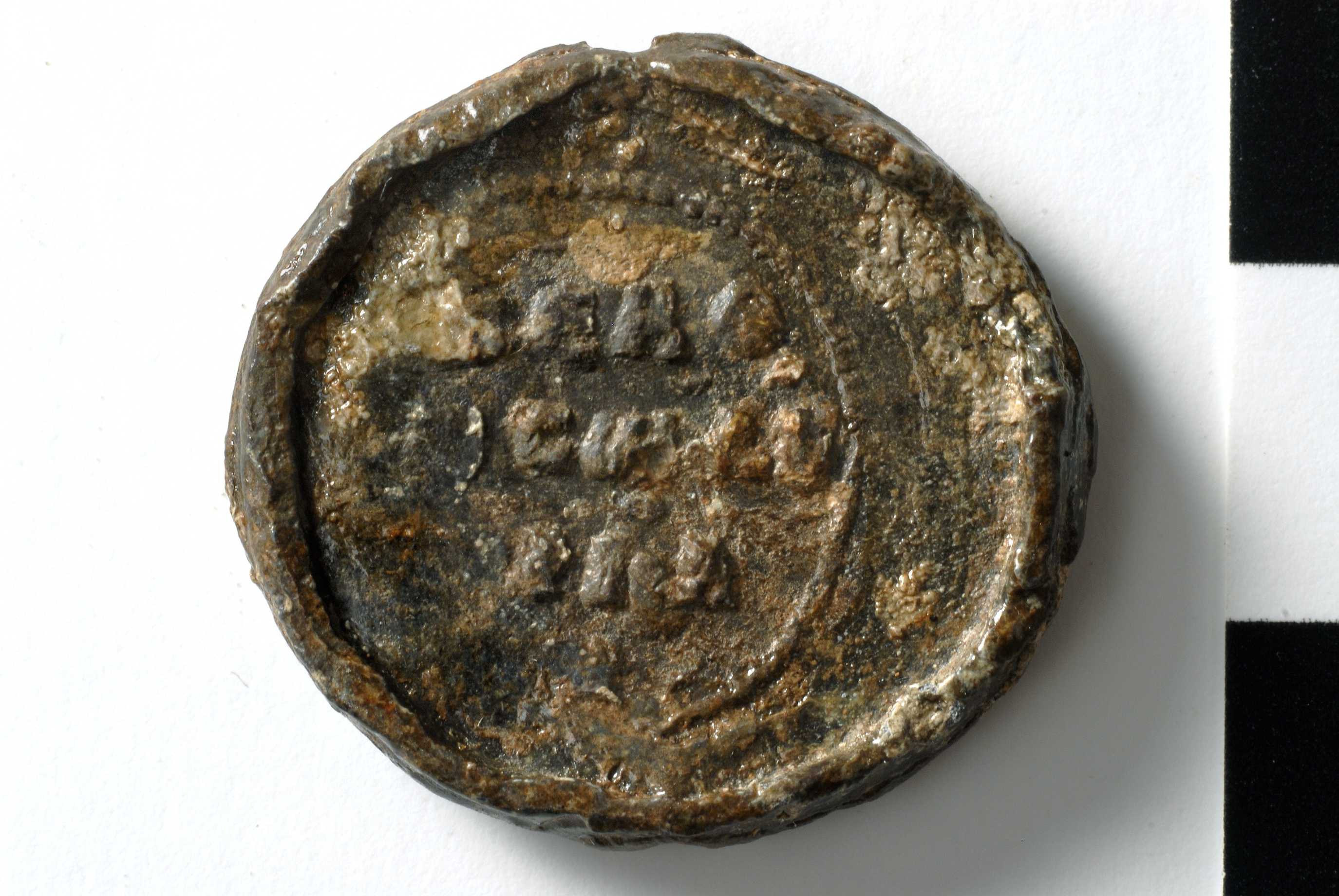Kyriakos monk of the Imperial Monastery (eleventh century)
Obverse
Inscription of four lines, the last letter between two horizontal bars. Border of dots.
κε̅,θ,
.σ
.υρια
κ
Κ(ύρι)ε β(οή)θ(ει) [τ]ῷ σῷ δού(λῳ) [Κυ]ρια[κ](ῷ)
Obverse
Inscription of four lines, the last letter between two horizontal bars. Border of dots.
κε̅,θ,
.σ
.υρια
κ
Κ(ύρι)ε β(οή)θ(ει) [τ]ῷ σῷ δού(λῳ) [Κυ]ρια[κ](ῷ)
Reverse
Inscription of four lines preceded by decoration, the last letter possibly between two horizontal bars.
μοναχ
τεσ
ποτι
κ
μοναχ(ῷ) [τ]ῷ δεσποτικ[ῷ]
| Accession number | BZS.1955.1.4959 |
|---|---|
| Diameter | 23.0 mm; field: 15.0 mm |
| Previous Editions | DO Seals 5 no. 78.4a; Laurent, Corpus 5.3: no. 1905. |
Translation
Κύριε βοήθει τῷ σῷ δούλῳ Κυριακῷ μοναχῷ τῷ δεσποτικῷ.
Lord, help your servant Kyriakos, imperial monk.
Bibliography
- Catalogue of Byzantine Seals at Dumbarton Oaks and in the Fogg Museum of Art, Volume 5: The East (continued), Constantinople and Environs, Unknown Locations, Addenda, Uncertain Readings (Open in Zotero)
- Le Corpus des sceaux de l’empire byzantin (Open in Zotero)

Commentary
Laurent (Corpus 5.3: nos. 1904–5) published only two of several specimens from the Dumbarton Oaks collections attesting the existence of a monastery known as the "Imperial," an establishment that, under this name at least, is not otherwise known.
This seal differs from other specimens of the Imperial Monastery, in that the reverse inscription identifies the owner as an "imperial [in the dative] monk," rather than a monk of the Imperial [in the genitive] Monastery.